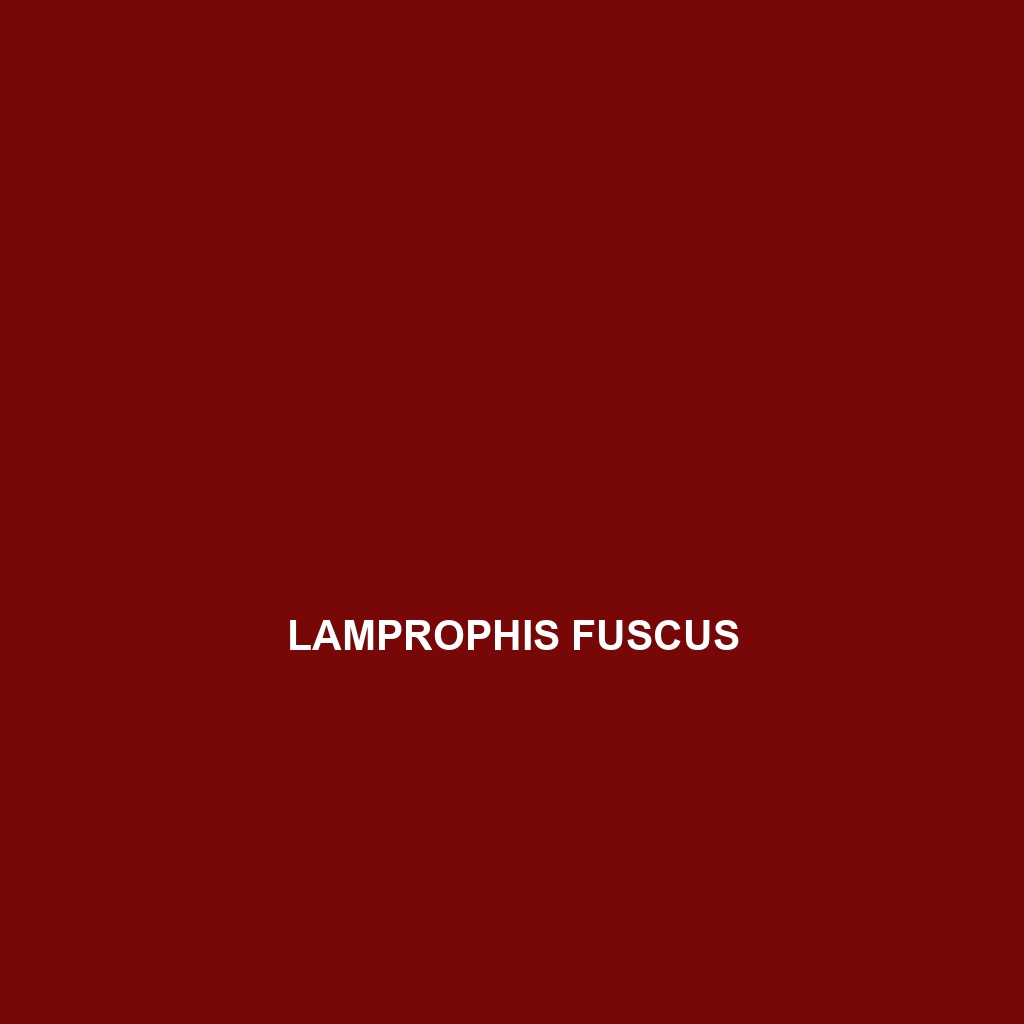Common Name
Lamprophis fuscus
Scientific Name
Lamprophis fuscus
Habitat
Lamprophis fuscus, commonly known as the Brown House Snake, predominantly inhabits various environments across sub-Saharan Africa. This species is frequently found in rainforests, savannas, and even around human settlements, demonstrating remarkable adaptability. They thrive in warm climates and prefer environments that provide ample cover, such as dense vegetation or rocky outcrops. The presence of moisture in their habitat, whether in the form of nearby water bodies or humid climates, supports their survival and hunting strategies. This snake is most commonly located in countries like South Africa, Botswana, and Namibia, where its versatility allows it to occupy both urban and rural landscapes.
Physical Characteristics
The Lamprophis fuscus is a medium-sized snake, reaching lengths of about 1 to 1.5 meters (3 to 5 feet). Its slender body exhibits a smooth texture, characterized by a distinctive coloration; typically, the dorsal side is a rich brown or olive-green, providing excellent camouflage against the forest floor. A notable feature of its appearance is the paler underside, which may vary from yellow to cream. The head is slightly flattened, and the snake has round pupils, allowing for excellent vision in low light conditions. Maturity is often characterized by a more vibrant coloration, making them easily distinguishable from younger individuals.
Behavior
The Lamprophis fuscus is primarily a nocturnal species, displaying activity during the night when it hunts for prey and mates. During the day, they are known to seek refuge in burrows or among foliage, minimizing exposure to predators and sunlight. Their social interactions are primarily solitary, although they may group in larger numbers during breeding seasons. Mating rituals often occur in the spring when males exhibit courtship behaviors that involve specific displays of body movements. This approached behavior is crucial during territorial disputes and attracts females for mating.
Diet
The Brown House Snake is a carnivore, primarily feeding on small mammals, birds, and reptiles. A notable aspect of its diet includes the predation of rodents, which are attracted to human habitats and agricultural areas. This opportunistic feeding behavior often leads to the snake being valued as a natural pest control agent. The snake utilizes constriction as its primary hunting method, subduing prey before consumption. Their feeding patterns are generally initiated at night, coinciding with their active hours, enabling them to hunt effectively under the cover of darkness.
Reproduction
In terms of reproduction, Lamprophis fuscus follows a seasonal cycle, with mating typically occurring in the warmer months following a period of increased rainfall. Females are oviparous, laying between 6 to 15 eggs per clutch after a gestation period of approximately 30 days. The eggs, which are leathery rather than hard, are deposited in moist areas to ensure a suitable environment for hatchlings. After hatching, baby snakes emerge fully developed and independent, relying on their instincts to find food and shelter without parental care.
Conservation Status
According to the IUCN Red List, the conservation status of Lamprophis fuscus is currently classified as Least Concern, indicating a relatively stable population. However, habitat destruction due to urban expansion and agriculture poses a potential threat to local populations. Conservation efforts are focused on habitat preservation and promoting coexistence with human populations, as this species plays a crucial role in maintaining ecological balance.
Interesting Facts
One fascinating aspect of Lamprophis fuscus is its capacity for color adaptation, allowing it to change shades to blend in with its environment better. Additionally, they possess a mild temperament, making them less prone to aggression compared to other snake species, which has led to their popularity in the exotic pet trade. Their ability to survive in close proximity to human habitats often leads to intriguing observations of their resourcefulness in finding food.
Role in Ecosystem
The Lamprophis fuscus plays a significant ecological role as both a predator and prey within its habitat. By controlling rodent populations, this species contributes to the overall health of the environment, preventing overpopulation of these small mammals which can lead to crop damage and the spread of disease. Additionally, as prey for larger predators such as birds of prey and larger snakes, they form an important link within the food chain, underscoring their status as a keystone species in their ecosystem.
